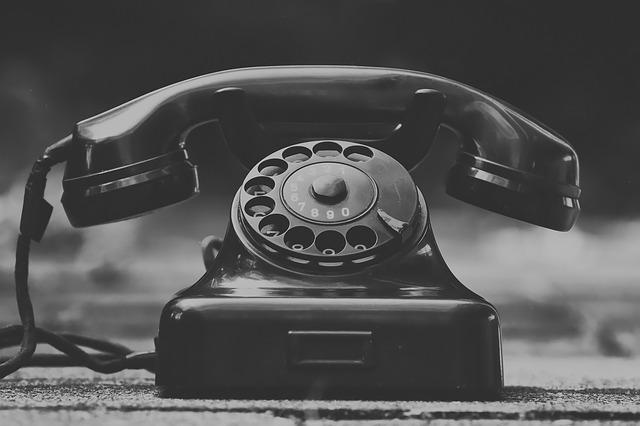
Hate your client? Here’s how to salvage that relationship.
(The simple art of speaking well)
My client and I hated each other’s guts. For the sake of this conversation let’s go ahead and call him Lou. Now, Lou and I had created something really cool, but every step of the way had been steeped in frustration. There was a constant back and forth, constant clarifications, and no one ever seemed happy with the process. Every revision Lou asked for seemed nonsensical and I wasn’t sure what he wanted most of the time. On his end, he felt like I was ignoring everything he wanted and not even trying to work with him. Frankly, it was a mess. In the end, the project did get finished, however, a bridge was burned in the process.
Problems like this don’t happen overnight, instead, they are made one mistake at a time until they are all but insurmountable. So where did this one begin? Let’s talk about how we even found each other in the first place.
The relationship started smoothly enough. Lou and I really enjoyed talking with each other and we felt an artistic connection. The spark happened after I had found the project on Twitter, and after looking through some of the content I immediately fell in love with it. I thought it matched well with my style as a composer and after some deliberation, decided I should reach out. Next thing you know, I’m on a Zoom call with Lou discussing creativity, the beauty of music, and the game he was making. It seemed like working together would be easy, and the result would be a creative home run!
That brings us to the first problem: We carried this tone and understanding into the working relationship.
When there is money on the table and work at stake, your communication must be different than any other conversation you have with them.
In most creative industries, friends will hire friends. This always comes with predetermined chemistry and balance from your previous experiences together. Frankly, though, you need to throw all of that out the window when it really comes time to work. You need to DEFINE the relationship and communication going forward. I’m not saying that you can’t have the same friendship dynamic in your working relationship, it just can’t be your assumed starting point. That can only be achieved after discussing from the ground up and realizing that dynamic will continue to be fruitful.
When there is money on the table and work at stake, your communication must be different than any other conversation you have with them.
In my situation, I felt like the fluency in which we initially discussed the project would be indicative of the entire experience. The problem was, we were discussing the project without anything at stake. There was no money, no actual work, no reliance on each other, no public exposure… this means there was really no perception of how this would function when those elements were added.
When we finally got down to work, Lou was MUCH more specific and demanding that I anticipated. He left me NO creative room to make my own choices. Worst of all, he seemed short and rude in most of our conversations.
Or at least he seemed to be from my perspective.
I was attempting to speak and collaborate with this client as I would speak to my friend… however, he was trying to work with me as a professional, not as a friend. This quickly caused tension and led to a much less fruitful relationship in the long term. The project turned out ok, but it was pulling teeth the whole way to get the work finished properly. At the end of the day, both of us were utterly exhausted. Creative work is extremely difficult and will always have struggles. However, in its completion, it should always feel rejuvenating and fulfilling. It is should NOT be something that you never want to look at again.
I spent some time reflecting on this as I felt like it had spoiled a musical opportunity and a friendship. Needless to say I never wanted this to happen again, for the remainder of my professional career! I refined my process going forward and narrowed down the key factors over the course of several dozen projects. In the end, I came up with three key things that MUST be established going forward in any client/contractor relationship. It’s as simple as always know the “Where, When, and How”.
- Where will you talk? Will you use discord or email? Text messages or Twitter DM’s? Focus on what medium of conversation allows for the most clarity to avoid your thoughts being missed.
- When will you talk? Some client wants to be updated frequently and some want to only hear from you for major updates. Either of these is fine, but once you nail this down you need to dig a step further:
- If they want smaller updates, are they aware that these updates will be rough and not final impressions of the project?
- If they only want bigger updates, are both parties aware that the ability to adjust the smaller details will be more limited? (More on how to do this well in a future blog).
- How will you talk? Will you prefer shorter, concise messages with little emotion? Do you want longer explanations for context? Are you ok with voice memos or even a video message to accompany updates? Will you regularly have a call to discuss things live?
- Note: This is different than how you talk as discussed above. That is just the medium of conversation. This is about how you use that medium and is equally important to understand each other.
Some personal advice for contractors when working with clients:
- If there is Slack group for the team, always ask if you can join to better integrate yourself with the team. It also gives more options for organization and the handling of conversations. After that I recommend Discord simply because most people are accessible through it more often than any other option.
- Push for larger updates and handle the details as much as you can ahead of time with references and preparation. (More on this in a future blog).
- ALWAYS push to have live calls or leave voice/video memos. An incredible amount of understanding gets lost through written text and confusion that has no place existing will be birthed. Even though it may take more time on the front end, live conversation is 100% more effective and makes the process much smoother.
- The exception is if your working with someone who’s native language doesn’t match your own. Depending on their fluency (or yours), text may be better as it gives extra time to understand and work through what is being said. Even then, I usually leave audio/video memos and speak much slower. The inflection is still critical.
Please, for the sake of creativity everywhere… take the time to nail down these things ahead of time! Always, without exception, treat it like it’s your responsibility, whether you are the client or the contractor.
These principles apply to any working relationship, but especially to those in the creative space. When creative work can be the most emotionally exhausting, or the most emotionally refreshing part of a project, never risk it on poor communication standards.
I’m a composer who writes atmospheric music for indie games and films. Father of three, lover of Mexican food.

September 20, 2022
Your music is a letdown? Here’s how to avoid that.
